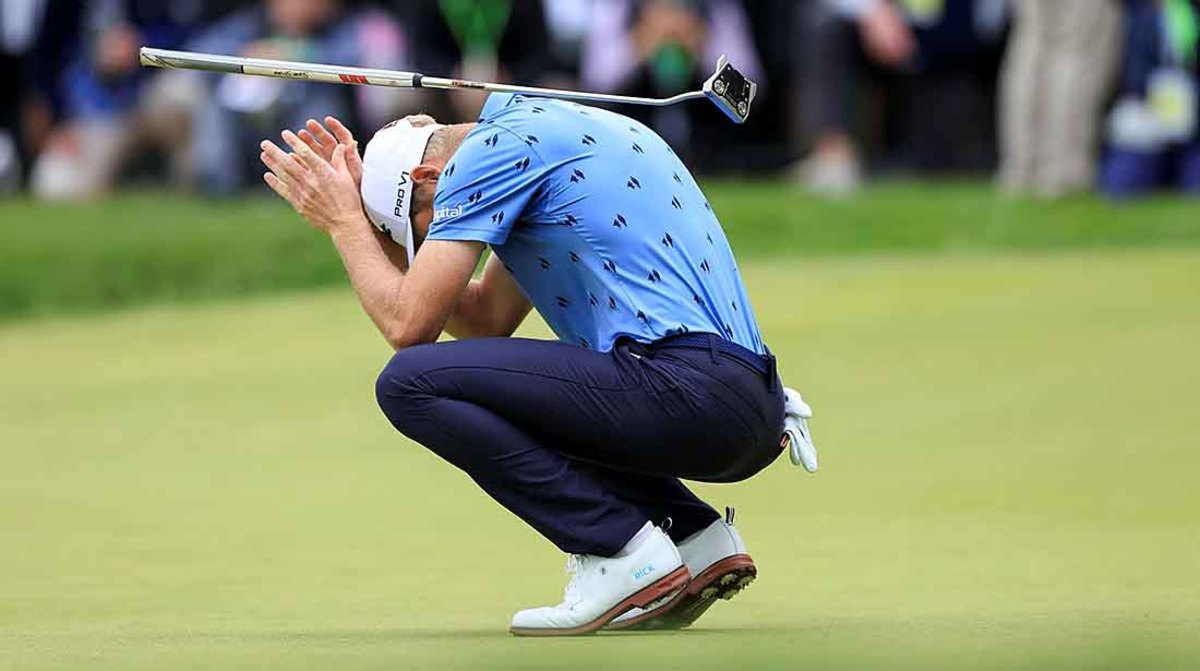Despite the Commercials, Channel Surfing and More Commercials, NBC Delivered at the U.S. Open

Modern times breed modern problems, whether it’s a major championship upstaged by the smell of rancid dough or a social-media uproar over the televising network’s decision to turn that same tournament into a high-def game of hide-and-seek. A frustrated Twitterverse? Imagine that. A redundancy of abundancy.
In terms of consequential overkill, however, those dark clouds hanging over Boston last week — the ones raining massive amounts of Saudi currency on mediocre tour pros and scaring both meteorologists and commissioners alike — won't be vanishing any time soon. Not since 1998, when then-USGA president Buzz Taylor vowed to turn back the clock on equipment technology and preserve the game's most sacred values and venues, has pregame chatter at a U.S. Open focused so squarely on an invasive controversy unrelated to the actual competition.
Speaking of which, the 122nd edition of America's national championship rated highly in all the categories that matter most: Sunday suspense, a leaderboard loaded with star power, terrific shotmaking down the stretch, an intense atmosphere throughout the weekend. The Country Club was a robust but not overbearing test of skill. We saw Matt Fitzpatrick go out and win the event instead of watching a half-dozen guys lose it.

Despite all those assets, the Brouhaha at Brookline succumbed to avoidable shortcomings as a television program, qualifying as a rare disappointment for NBC, which usually does a superb job of presenting what isn't exactly the sexiest stop on the schedule. The problems weren't in the announcing or visual aspects of the broadcast. Lead analyst Paul Azinger was outstanding, especially during the action-packed final round. David Feherty and Gary Koch also factored to great effect on Sunday, providing the type of depth and insight we've come to expect from a pair of experienced experts.
What undermined this telecast was its planning. In an effort to promote its streaming service (Peacock) and increase the visibility of USA Network, an auxiliary partner, NBC assigned more than 75 percent of its live, early-round coverage to those two properties. That's 20 1/2 of 26 1/2 hours in two highly unlikely places, which required those just crazy enough to watch every second of the U.S. Open to change the channel seven times over the first two days.
Not that reaching for the remote is tantamount to participating in a triathlon as it relates to physical activity, but the aggravation caused by the frequent relocation of the tournament demonstrated a lack of regard for viewer sensibilities. "Peacock is a huge company initiative, so we are carving out exclusive time for the platform," an NBC spokesman told me.
It's also a pay-per-view service. Nobody should have to reach for a credit card to watch the U.S. Open.
When announcing the inclusion of USA Network as a carrier of the year's final two majors last November, NBC/Universal executive Frances Berwick referred to "Chrisley Knows Best" and "the high-octane energy of our WWE personalities" while heralding USA's deep reach as a cable leader in sports and entertainment programming. That's all fine and dandy, except that we're talking about the most important golf tournaments on Earth, not some dysfunctional family in Georgia run by parents recently convicted of bank, tax and wire fraud.
Doesn't NBC/Universal own the lone network devoted to the game itself? Golf Channel didn't get 10 seconds of live air at Brookline. This station-to-station maneuvering was done ostensibly for commercial purposes, which amounts to sound business sense — USA surely gets a higher rate and has a broader range of potential suitors when it comes to advertising revenue — which takes us to the viewer beef that turned into an entire herd of cattle over the weekend.
There were nine commercial breaks in the final 75 minutes during the USA segment of the Friday telecast. That's an interruption every 7 1/2 minutes, which is excessive to a level best classified as shameless. The social-media barking got so loud that USGA chief executive officer Mike Whan felt compelled to respond in like form. "I'm on it!" he tweeted to the grumbling masses, adding, "if the amount of interruptions [is problematic], we will work with our partner to do better."
I’m on it! We have the best sports production team in the world here with our partner NBC Sports (Olympics, Super Bowl, etc.) and if the amount of interruptions are problematic, we will work with our partner to do better!
— Michael Whan (@USGAMike) June 19, 2022
1/2 https://t.co/bI7wuLMivB
For someone in Whan's position to speak with such conviction, especially in direct communication with the public, is almost unheard of. To make his case with NBC, he can point out that there are very few commercial pauses during the network's Premier League and auto-racing broadcasts. Then again, perhaps a third of all ads that ran in the early stages of a U.S. Open were promotional spots for the USGA itself.
What the telecasts lacked in flow cannot be justified, but a strong Sunday performance, anchored by Azinger's sharp opinions and a strong reliance on PGA Tour stats in both audio and graphic form, brought the week to a positive end. Whereas CBS whiffed on any dissection of Will Zalatoris' funky putting stroke at the PGA Championship, Koch broke it down in style through a slow-motion visual, telling viewers that the kid ranks 198th this season on attempts from 4 to 8 feet.
Azinger noted another Zalatoris weakness after his drive at the 15th settled in thick right rough — he'd entered the week 205th in approach accuracy when missing to that side of the fairway. Sure enough, it led to a lousy second shot and a bogey that would cost Zalatoris dearly in pursuit of Fitzpatrick. It was Azinger who first declared the winner's closing 68 as one of the best ballstriking rounds in U.S. Open history, right there with the clinic David Graham conducted en route to the 1980 title.
Bold stuff, which is precisely what the job of lead analyst entails. Azinger has curbed his critical instincts somewhat since succeeding Johnny Miller in early 2019, something network television has a habit of doing, but the filter was nowhere to be heard at Brookline. "That is a disaster — just a horrible shot at the wrong time," Zinger barked when Adam Hadwin hooked his tee ball into purgatory at the par-3 2nd. "You just want to try to get through these first four holes without a mistake, but Hadwin made a big one there."
It added up to a product CBS is incapable of offering: four days of championship golf delivered in an elusive bundle of wisdom, energy and TV's interpretation of journalistic integrity. The 122nd U.S. Open might have been hard to find and somewhat maddening to watch, but there was a reward at the end of the tunnel. Dark clouds and all.
Agree? Disagree? Tell us at inbox@morningread.com and we may publish your letter. And to receive all the latest news and commentary free in your inbox every morning, sign up here.
